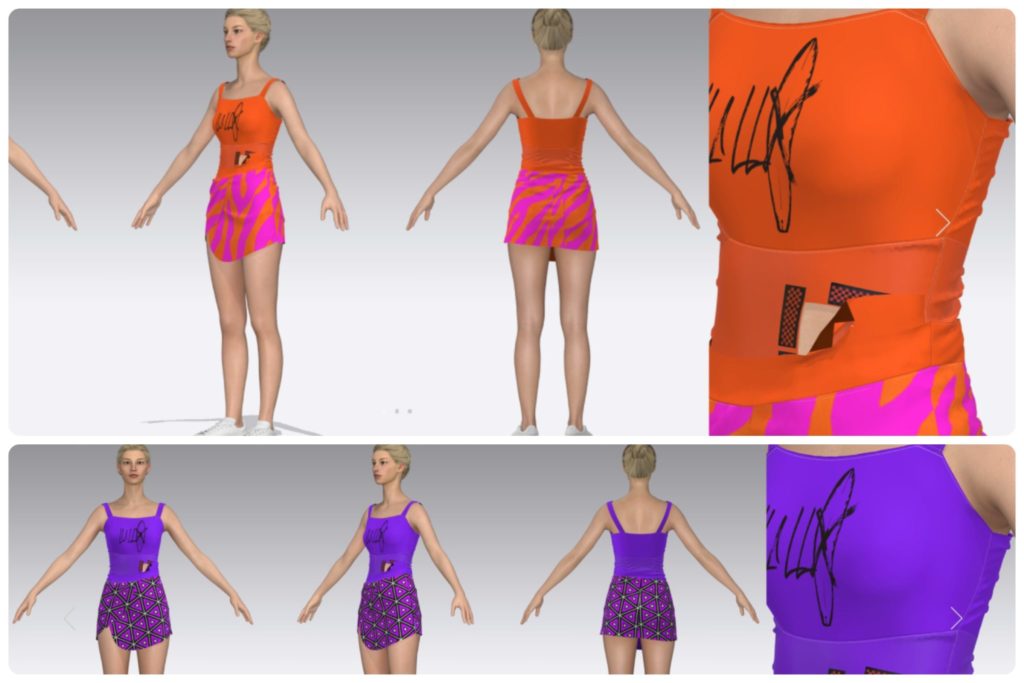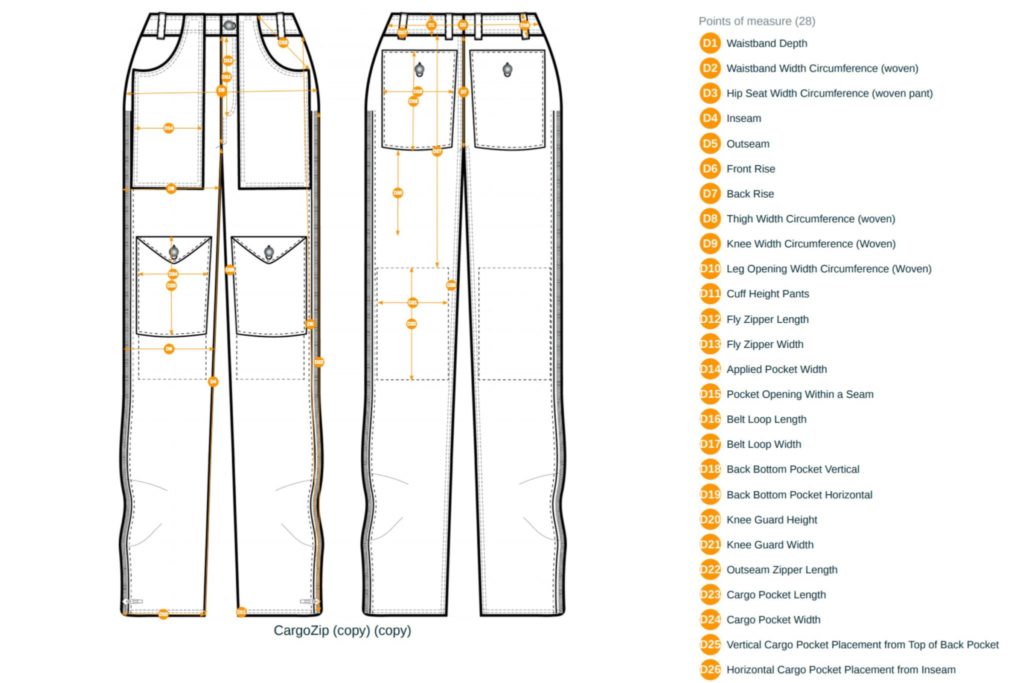
Good design is known for being innovative, useful, aesthetic, and long-lasting. Students in the Colorado State University Department of Design and Merchandising’s product development concentration are incorporating all of these principles along with a focus on inclusivity for consumers with physical and cognitive differences. The students in the AM 475 Product Development Capstone class address target market research, technical package development, and a thorough understanding of all it takes to develop a product while keeping accessibility in mind.
Inclusive design at work
Kristen Morris, assistant professor in the Department of Design and Merchandising, asked students to create an apparel line incorporating inclusive design principles resulting in “products that are accessible to the greatest number of users possible.” The course objectives center on inclusion, inclusive design, and design for social change.
The development of most clothing doesn’t take into account the needs of consumers with physical or cognitive differences. For many, dressing and undressing is unnecessarily difficult due to the lack of adaptive changes in design.
“I ask the students to unpack the notion of the ‘average consumer,’” said Morris. “We discuss that mass-market apparel brands likely have a set of assumptions about their target market, for example, able-bodied, slim body build, hetero and gender normative, and more.”
The students were tasked with addressing these needs through engagement with community members and then designing with users at the center of their process.
“I do this because I believe that students, as emerging industry professionals, should consider how clothing impacts the lives of diverse people in radically different ways,” said Morris. “I want the students to be responsible product developers so that the products they design do not inadvertently exclude certain people from finding joy in using the products they design.”
Morris’s own design research focuses on these principles, and she includes this design philosophy in student projects whenever possible to “advocate for critical thinking and whole-person design solutions.”
“I have observed the benefits of integrating user-centered methods in the classroom to be reduced prescriptive design, more motivation to develop iterative ideas, and authentic product solutions,” she said.
Technical work and research
In the course, students completed the full process of product development and design. To begin the project, students established a target market and conducted market research that incorporated an in-depth understanding of the consumer as well as an analysis of competitor brands’ strengths and weaknesses. The end goal was three garments, but along the way, students created a brand with a name, logo, and unique brand identity. The branding is carried through, not only in the development of the garments, but also in labels, hangtags, promotional mock-ups, and website they built around their inclusive design concept.
The creation of the garments focused on addressing the needs of the consumer and incorporating those inclusive, adaptive design elements. The ideation began with an inspiration board, progressed to sketches of the garments, and eventually, 3D visualizations of the garments were created using CLO3D technology. Once the final designs were established, students create technical packages for the development of the garment that include line sheets, costing, and utilization reports. Students shared their process via social media posts and built websites to promote their process and design ideas.
Functional for people with prosthetic limbs
Colin Humphreys, a senior in the product development concentration in the apparel and merchandising major, created a series of pants (joggers, a cargo-zip pant, and a hybrid pant) that include adaptive features to accommodate people living with prosthetic limbs. In his research, he discovered major clothing frustrations for his target market including clothes that restrict movement, openings that hinder use with prosthetics, and a lack of options that were exciting and conveyed the wearer’s style.

Humphreys created jogger pants to address comfort and mobility as well as durability and access. The joggers feature a special type of fastener to aid in dressing and undressing. The hybrid pant can be either pants or shorts allowing for wearing options and customizability depending on the need. The cargo-zip pants include zippers in the outer side-seams to allow for easy access for taking the prosthetic on or off.
“The most valuable lesson I learned from this project was to recognize the need for adaptive apparel,” said Humphreys. “Reading through all the primary sources from people with disabilities was inspiring but also eye-opening to the daily inconveniences traditional clothing poses.” For more information on Humphrey’s project, you can visit his website.
Adaptive surf apparel for people with G-tubes or PEG tubes
Kira-Sophia Gregory, a recent graduate in apparel and merchandising, created a line of surf apparel for those with diabetes or who need a G-tube or PEG tube. Her brand is called Lull, which comes from the moment of calm between waves. Gregory’s research showed that these users need access to certain body points for medical access and injections. While surfing in a wetsuit, this requires the user to completely undress, which can be difficult while enjoying a day outside on the waves.

Gregory’s design process resulted in a full wet suit, a spring suit (swimsuit with long sleeves), and a one-piece swimsuit with a wrap skirt. Each design includes modifications for openings to access the body, as well as waterproof pockets for needed medical equipment storage. You can learn more about Gregory’s work on her website.
Molly Michelle, a line for cancer patients with an implanted port
Maxwell Hackett’s inspiration for his project is personal. A senior in the product development concentration, he developed a women’s apparel line called Molly Michelle in honor of his mother, who has battled colon cancer. Hackett shares that clothing and fashion were huge parts of his mother’s personality before her illness and being fashionable was a large part of her identity. After her cancer diagnosis, she lost that fashionable identity that was a large part of her life. She needed fashionable, trendy clothes that provided access to medical ports had some amount of adjustment capabilities for when body weight fluctuates due to illness, and something comfortable without cold zippers and with especially comforting fabrics for chemotherapy sessions.

Hackett’s solution was a top, hooded sweatshirt, and sundress. Comfortable fabric, trendy colors, fashionable silhouettes, and port access through varied clothing openings and fastenings were important parts of the design. Hackett even started prototyping some of these garment designs to help his mother with ease of access. To learn more about Hackett’s work, you can visit his website.
What’s next for product development students?
Morris has big plans for the future of this course and hopes to incorporate more community engagement in the inclusive design process.
“My vision for this course is to develop more connections within our CSU and Fort Collins community to connect students and potential consumers,” said Morris. “I would love to have more engagement between the students and the people for whom they are developing products. My future vision is that each semester, we partner with a community organization where the students and end-users develop a symbiotic relationship where the users are engaged as true collaborators in the design process.”
Students play a major role in beginning this partnership. They already reach out to community organizations for the research required of the class, but Morris hopes to turn these initial connections into lasting partnerships. As future students go on to do more prototyping work in this course, feedback for design improvement from the community will become essential.
Morris is also continuing to add to a website for her research group, the Inclusive Innovations Lab. The website will showcase student work that exemplifies inclusive design principles. Morris said, “This website is a platform to share the faculty, graduate, and undergraduate work we are doing in the Department of Design and Merchandising regarding inclusive design for underserved and marginalized consumer groups.”
The Department of Design and Merchandising is part of CSU’s College of Health and Human Sciences.